Plays with Cate Blanchett with the Company B Ensemble at Belvoir Street Theatre.
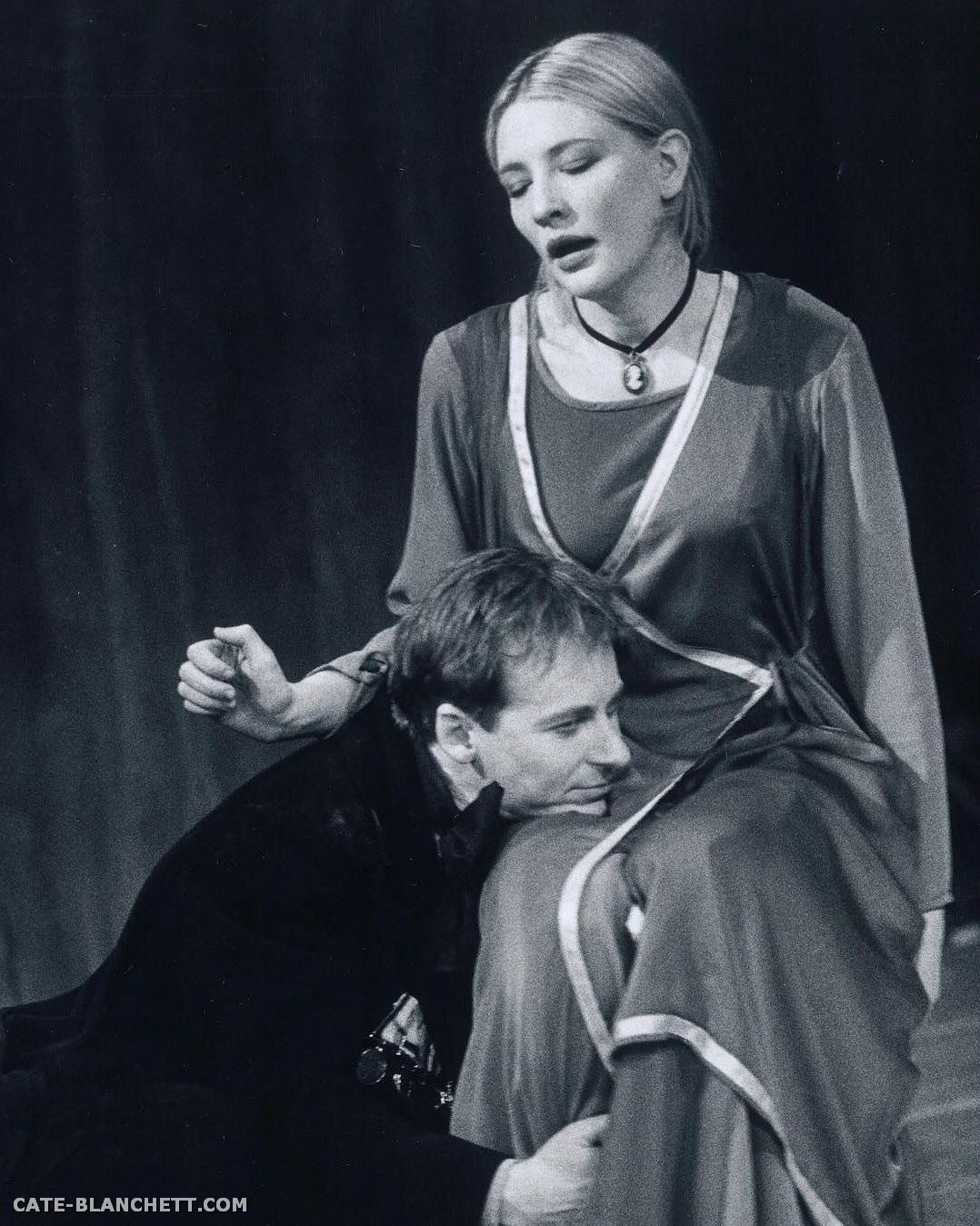 Hamlet (1994-1995)
Hamlet (1994-1995)
Cate Blanchett as: Ophelia
Directed by: Neil Armfield
Written by: William Shakespeare
Play run: 23 June – 31 July 1994
Venue: Belvoir Street Theatre
Haunted by the ghost of his deceased father, Hamlet exacts revenge on his murderous uncle.
Cast
Richard Roxburgh as Hamlet
Cate Blanchett as Ophelia
Geoffrey Rush as Horatio
David Wenham as Laertes
Gillian Jones as Gertrude
Related Images
View more images at the gallery.
Quotes from Cate Blanchett
- On Richard Roxburgh: “He’s one of my favorite actors on the planet. There’s never a false note in anything he does. The stakes are always high, the level of play is always rich, and I always know that wherever I decide to go, he’ll be right there with me. I’d do everything with Rox if I could.” (Vogue, December 2006)
Quotes from Others
- Richard Roxburgh
— “I’ll always remember in Hamlet [for Belvoir] that, strangely, my most profound moment that always used to hit me in the guts wasn’t seeing my dead father’s ghost, but when Hamlet returns his gifts to Ophelia [Cate Blanchett]. And I remember giving those back to Cate and these great puddles of water spraying out of her eyes every night. It used to go right through me. And I remember thinking there’s not a moment when she’s not absolute in what she’s doing here. It feels really safe and certain in her gaze on stage. And that’s a great thing.”
Selected Reviews
- The Age — “Fine performances draw fresh ideas from even the most well-known soliloquies and Hamlet is absorbing through all of the four hours.
Hamlet is a marathon for actors and audience, almost four hours of playing time during which some of Shakespeare’s most profound ideas and most complex charcacterisations fill the stage. This Belvoir production, directed by Neil Armfield, is absorbing and rewarding for all of that time. It skillfully re-animates the pulse with a rhythmic ebb and flow of emotional intensity that owes much to the emphasis on ensemble acting.
Richard Roxburgh is a first-rate Hamlet – intelligent, engaging, quizzical and impassioned by turn – but his character is defined in relation to a group of distinctly delineated characters who gradually weave a web of intrigue to enmesh him. Roxburgh gives an almost transparently open reading of Hamlet; his is a tortured soul, but not in an especially metaphysical sense.
Cate Blanchett as Ophelia gives a suggestive performance of considerable subtlety. Her mad scene is one of the gradually escalating points of emotional catharsis, culminating in the final carnage when Hamlet dies in the arms of an anguished, sobbing Horatio.” - The Australian — “By including the Company B Belvoir’s Hamlet in its 1995 subscription season, Melbourne Theatre Company has given its audience such a rich and rewarding experience that many recent local offerings pale by comparison.
Director Neil Armfield and his ensemble have crafted a sharply observed contemporary production that taps into all kinds of unhinged behavioral traits to form a spare, near-seamless and enthralling Hamlet. It is awake to the text’s comic potential as well as its murky follies.
Moments of truth, agony and pain are exposed in harsh, glaring industrial light, while shadows, flickering lights and dark voids at the edges heighten the play’s tone of suspicion, fear and loss.
Armfield adds some superb comic flourishes to accentuate the poisons trickling blow the play’s surface. In the interplay of characters he sets in motion a delicately controlled chain of events in which characters, be they weak or strong, are, in effect, out of control.
A number of dramatically charged scenes, irrespective of how familiar they might already be, are made astonishingly vivid by the serene, stolid presense of Geoffrey Rush’s Horatio; a moral linchpin in a world gone mad and an eyewitness, like the audience, to uncontrollable, terrifying acts.
Cate Blanchett’s “mad” scene is mesmerising for its earthiness; this is not a tragic Ophelia but one of potent sexuality and uncoiling passion. Peter Carroll’s superb Polonius is a comically willful conspirator and gossip, while Russsel Keifel (Guildenstern) are inept, naïve and tentative bunglers who would be perfectly at home in a British sitcom.
Richard Roxbrugh’s Hamlet, for all the self-conscious idiocy, posturing and deliberations, invests the character with a confused, vulnerable humanity, powering along with natural, fully believable instinct in a world of deceit and theatrical illusion.
The production has great sense and purpose is what is an enduringly insightful, deeply resonant play.”
Trivia & Facts
- The play toured at Space Theatre (January 1995) in Adelaide, and at Playhouse (September – October 1995) in Melbourne presented by Melbourne Theatre Company.
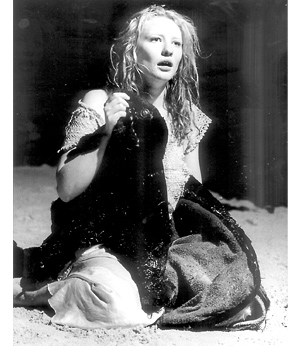 The Tempest (1995)
The Tempest (1995)
Cate Blanchett as: Miranda
Directed by: Neil Armfield
Written by: William Shakespeare
Play run: 30 May 1995 – 2 July 1995
Venue: Belvoir Street Theatre
A play about magic, betrayal, love and forgiveness. Prospero uses magic to conjure a storm and torment the survivors of a shipwreck, including the King of Naples and Prospero’s treacherous brother, Antonio.
Cast
Barry Otto as Prospero
Cate Blanchett as Miranda
David Wenham as Alonso
Gillian Jones as Ariel
Jason Clarke as Ferdinand
Kevin Smith as Caliban
Gonzalo Ralph Cotterill
Related Images
View more images at the gallery.


- “With Miranda, often there was a real childlike sense of pleasure when moments worked. That sense you get when you please your parents as a child – you did good and consequently when it didn’t work I was distressed. I would come off and beat myself about something that had happened. But my role wasn’t at all angsty, so there was no point in dwelling on that. You had to come on and be wondrous.” (Sydney Morning Herald, July 1995)
- On Barry Otto: “I was utterly daunted but so excited about the prospect of working with him onstage. I’d always looked up to him, really, because he was one of those rare breeds in Australia who is able to have a deep and rich connection to the theatre but also as much impact on the screen. Then when I met him in the rehearsal room, he seems almost like he’s some sort of… he’s like a hat full of elves or imps or something. You have this instant desire to protect him because he doesn’t appear to have any skin like a regular person but then as Prospero he just erupted. He was volcanic. And you realized, ‘No, actually he can protect me.’” (Otto by Otto, 2024)
Selected Reviews
- Daily Telegraph — “In a courageous move, Armfield has cast Aboriginal actor Kevin Smith as the character Caliban, and has deliberately loaded the work with the politics of Australian colonialism – something the Elizabethan author could obviously have known nothing about.
But because of the sensitivity of the direction, Armfield’s purpose is executed well and, although the condition of the much-abused Caliban does not override some of the more intricate intentions of the piece, his plight does become a more integral issue in the play.
The Tempest works in layers as the magician Prospero, using his magic powers, tries to orchestrate fate – not only to see his innocent and protected daughter right in the matters of love but also to regain his usurped position in matters of state.
Barry Otto was a commanding (but at times vulnerable) presence as Prospero – strong, almost harsh, when it came to directing his minion Ariel (Gillian Jones) but compassionate and gentle with his daughter Miranda (Cate Blanchett).
Blanchett puts in a terrific performance – her ethereal beauty and her characterisation of a woman denied contact with the outside world, gazing in wonder at such “beauteous creatures” (men) gives her a splendid stage presence.
Smith’s Caliban is also a wonderful performance. He is desperate to regain his island but innocent enough to be duped by the drunken revelers who would be kings of their own pocket of territory. Armfield has highlighted the comedy in this piece without losing the mysticism and magic which is cued by the use of simple electric lights and music. And he has retained the dignity of the characters marooned on the island despite their rough and ready appearance – Areil is a soiled angel, a nymph of the subways rather than of the woods, and Miranda must carry her beauty through her rags.
What it adds up to is one of the gentlest and most sensitive of this work that I have seen. Nothing is rammed down the audience’s throat but no layer is left uncovered. Sensuous and delightful, this is a very special play.” - Sunday Telegraph — “Cate Blanchett has a translucent quality which was well suited to her portrayal of the unwordly, 15-year old Miranda, whose awakening to love at first sight of that “wondrous creature” Ferdinand, the King of Naples’ son, and a life outside her tiny island, is touching and humorous in its childlike simplicity.”
- Sydney Morning Herald — “Cate Blanchett has a translucent quality which was well suited to her portrayal of the unwordly, 15-year old Miranda, whose awakening to love at first sight of that “wondrous creature” Ferdinand, the King of Naples’ son, and a life outside her tiny island, is touching and humorous in its childlike simplicity.”
Trivia & Facts
- The play toured at Space Theatre (November 1995) in Adelaide.
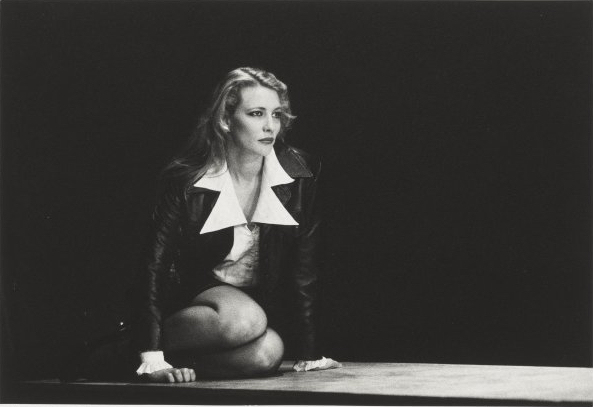 The Blind Giant is Dancing (1995)
The Blind Giant is Dancing (1995)
Cate Blanchett as: Rose Draper
Directed by: Neil Armfield
Written by: Stephen Sewell
Play run: 12 August – 10 September 1995
Venue: Belvoir Street Theatre
An idealist becomes so embroiled in a party power struggle that he loses sight of what’s at stake.
Cast
Cate Blanchett
Peter Carroll
Hugo Weaving
Jason Clarke
Ralph Cotterill
Gillian Jones
Russell Kiefel
Jacek Koman
Catherine McClements
Keith Robinson
Steve Rodgers
Kerry Walker
Related Images
View more images at the gallery.
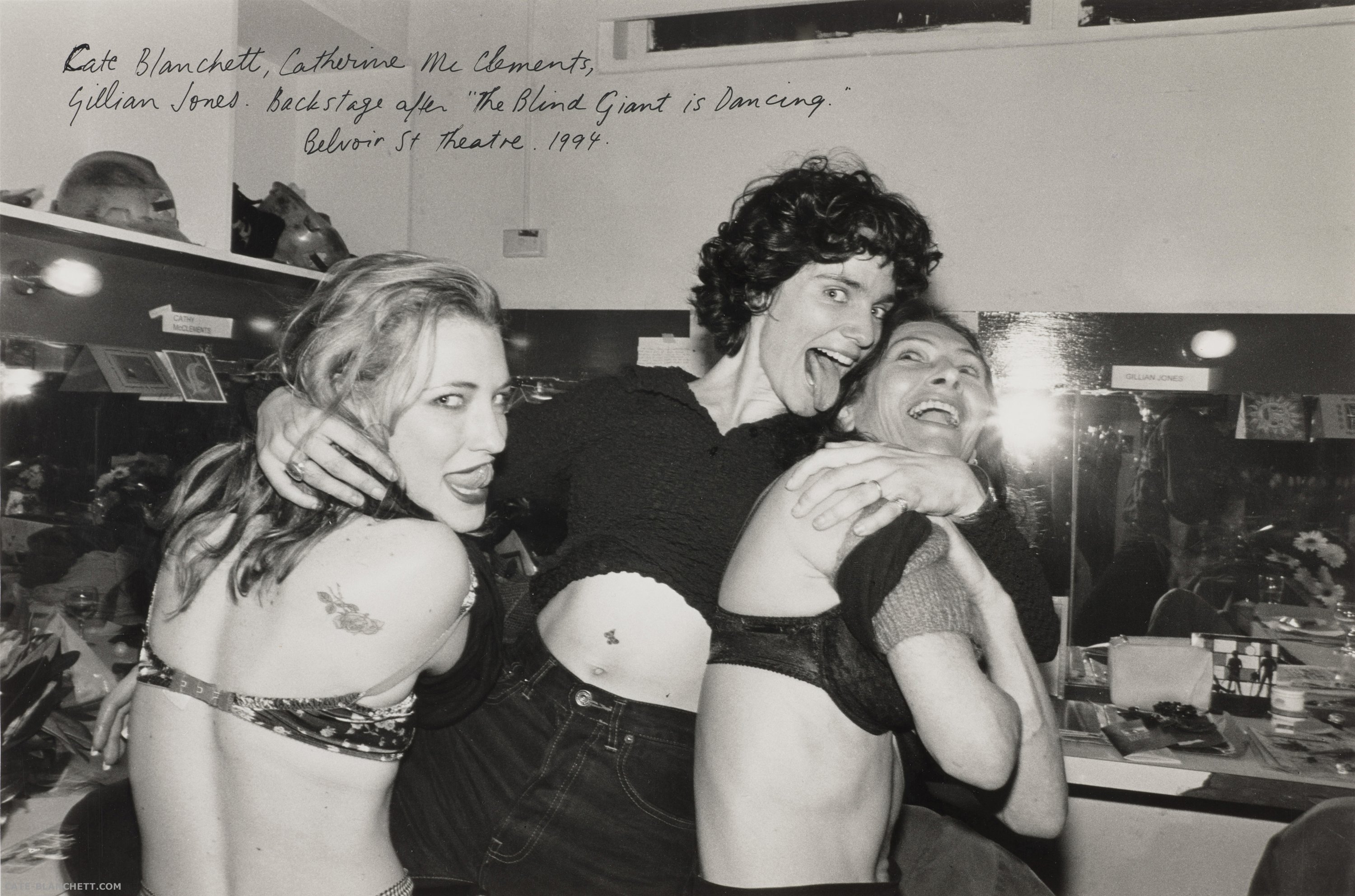
- On playing Rose right after playing Miranda [in the Tempset] who are polar opposites: “It’s fantastic that I’m being offered things that are poles apart rather than always playing ‘the juve’. With acting … sometimes I think I love the danger of it. Particularly with stage work; you don’t know what’s going to happen each night. And I love the nutting out. Sometimes I love finishing. I don’t believe in acting in isolation. It would bore me. What’s delighting me about being with the ensemble [at Belvoir Street] is that you are absolutely working with other people.” (Sydney Morning Herald, July 1995)
Selected Reviews
- Daily Telegraph — “Stephen Sewell’s The Blind Giant Is Dancing is a play about power, corruption, sex and politics set in the heady days of Australia in the early 1980s. It was a time when the trade unions still had considerable influence on the Labour Party and the dream of the socialist left still seemed a viable alternative to the inequalities imposed by capitalism.
The play is nothing short of a masterwork, a finely-wrought piece which features personal angst and the big-picture issues, that so much drama created n the ’90s seems to ignore. Sewell’s portrait of Australia in the ’80s is bleak and pessimistic and the question we are forced to ask ourselves is: has anything changed?
Hugo Weaving plays Allen Fitzgerald, a socialist economist and union heavy, who not only has to come to terms with the morality of politics – a contradiction in terms – but also a personal struggle influenced by guilt and complex feelings toward his Jewish wife (Catherine McClements) and domineering, working-class father (Peter Carroll). His brother Bruce (Jason Clarke) is a steelworker and one of the “Oppressed” Allen claims to be representing in the corridors of power. Enter into the melee Rose Draper (Cate Blanchett), a beautiful financial journalist obsessed with power and powerful men – the result is dynamite.
The piece plays with the notion of freedom and the inevitable corrupting influence of power. It also questions whether honest labour is not an euphemism for slavery. A production this engaging and exciting is rare, particularly with a cast so uniformly terrific.
Weaving takes control of the stage masterfully and Blanchett is sultry, sexy and seductive, providing an irresistible force which accelerates Allen on his road to moral destruction.
Simply and courageously designed, and incorporating a nostalgic soundtrack with numbers by Blondie and The Beatles, this production not only captures an era of Australian history, it also reflects the coming of age of politics in this country.
After disappointing productions of his trite and dull Gardens Of Granddaughters and the weakly structured Miranda, The Blind Giant Is Dancing – written about a decade ago – proves why Sewell is regarded as one of Australia’s greatest playwrights.” - The Australian — “ The Blind Giant Is Dancing is a dramatic exploration of how as individuals we make the world and the world makes us. Public crimes are reflections of private evils, evils produced by having to live in a world of public crimes. In pursuing this endless cycle, Sewell sometimes seems to be on a spiritual quest to find some redemption in the tiny but palpable fact of existence of impotent hope in all our hearts.
The play, which was first produced in 1983, is completely over the top in an utterly compelling way. The pace increases breathlessly as the action develops. The scenes become shorter and shorter as its unwieldy and rushed narrative races towards apocalypse. Sewell’s writing starts at the point when most plays reach their climax and then builds. Nothing is left unsaid, there is no subtlety or subtext, no argument is allowed to peter out with things unstated. This effect still operates in this pared down version (still three and a half hours) of the original. Sewell writes with a raw passion and deep seriousness rare in Australian drama.
The staging and the music are simple, industrial and austere. It is in the performances that the power of this production is generated. Hugo Weaving is terrific as Allen Fitzgerald, the idealist driven by a passion he does not understand and finally rejects, who makes a Faustian pact with the marvellous Cate Blanchett’s Rose Draper. Their relationship, almost surrealistically external to the grubby political story of the play, is in fact at its centre. It is finally reincorporated in the action in a way that makes the surreal pervade the everyday world of the play’s particularly bitter version of Realpolitik.
Rose seduces Allen, personally and politically, in order to test his purity, and her eventual triumph is completely hollow. “I hoped you’d win,” she says just before the end.
This is an ensemble that performs superbly and, apart from Weaving, Blanchett and McClements, there are several other performances that stand out. Peter Carroll and Kerry Walker, as Allen’s parents, seem to have wandered in from another play, so real and human are they in the comic barbeque scene, that opens Act 2. Jacek Koman is very good as Ramon, virtually the only conventionally honest character; and Jason Clarke, although the script gives him less to do until the end, succeeds well as Allen’s brother Bruce.”
 The Seagull (1997)
The Seagull (1997)
Cate Blanchett as: Nina
Directed by: Neil Armfield
Translation by: Oleg Bichenkov, Anatoly Frusin and Neil Armfield (Play by Anton Chekhov)
Play run: 4 March 1997 – 13 April 1997
Venue: Belvoir Street Theatre
The first of Chekhov’s great comedies, this splendid company has spent three acts giving us the comic side of the characters and establishing their absurd humanity … the production is full of marvelous encounters.
Cast
Gillian Jones as Irina
Richard Roxburgh as Trigorin
Cate Blanchett as Nina
Noah Taylor as Kostya
Related Images
View more images at the gallery.

- “The Seagull has really thrown up a lot of questions for me because it is about theatre and the way you endure a life in the theatre or in the arts and keep working. It’s been very confronting at this particular time. I love attacking character and inhabiting somebody else’s shoes completely, but this time the masks have been egg-shell thin. It’s almost as though we have been asked to play ourselves, even though they’re not our words or our psyches.” (Sydney Morning Herald, May 1997)
- On returning to a production of The Seagull after more than 20 years and playing a different character this time: “It’s really interesting coming back from inhabiting the equal and opposite end of the spectrum after having a career in theatre.” (The Guardian, February 2025)
- On playing Nina: “I’d just met Andrew [Upton] and was madly in love and thought: ‘How am I going to go out every night and be broken open when I’m so deeply happy?’”
Quotes from Others
- Neil Armfield:
— On the phone call he received from Jane Campion after seeing The Seagull: “She [Jane Campion] said Cate’s [Blanchett] Nina was so utterly perfect and true she just wished Chekhov had been able to see it. She said it was the sort of performance a writer would hope for but never expect.”
— On Cate Blanchett: “We planned The Seagull round her. She seemed to be made for it.”
— “Cate had everything for Nina: the voice, the imagination, incredible enthusiasm and this beautiful clumsiness. She was heartbreaking. I remember coming home one night to a message Jane Campion left on my answering machine saying it was as if Chekhov had written it for her.”
— “She [Cate Blanchett] looked like Grace Kelly, with a beautiful comic sadness. She is so unpretentious; she has no kind of claim on herself. She would always just apply herself to the task. Quite insecure, really, with an immense reserve of skills and an ability to sit inside a thought, a great talent for an actor. It reveals so much, and that’s important with Chekhov. Like Geoffrey Rush, she has the power to be outside her body and to absolutely see it as something in a landscape.”
— “Nina moves from someone whose comedy [in the first act] is based on her native gaucheness to someone – without seeing any of the shifts in between – comes back with this terrible weight on her heart. It’s an incredible, tragic journey, which Cate [Blanchett] was able to carry so absolutely. [It’s not that Blanchett is a Nina-in-the-making; more that] Cate, like most great actors, has access to a real sadness.” - Andrew Upton:
— On his romantic connection with play: “We were engaged and Cate [Blanchett] was playing Nina in Neil’s wonderful production. I saw that production 12, 13, 14 times. It was a great production – flawed, like all productions – but great.”
— On Cate Blanchett, his then fiancee, as Nina: “I must have seen it 13 or 14 times. Her [Cate Blanchett] Nina was almost dangerously naive; too fragile for the world.”
Trivia & Facts
- Cate Blanchett and Richard Roxburgh have worked together in film and theatre — Thank God He Met Lizzie (1997), Oscar and Lucinda (1997) and The Turning (Segment: Reunion, 2013); Hamlet (1994-95), The Seagull (1997), Uncle Vanya (2010-12), and The Present (2015-17).
- Cate Blanchett guest starred in the TV series, Rake (2014), as the lesbian version of Richard Roxburgh’s character.
- Gillian Jones and Cate Blanchett have worked together in Oscar and Lucinda (1997) as mother and daughter; Hamlet (1994-95), The Tempest (1995), The Blind Giant is Dancing (1995), and The Seagull (1997).
- Theis was the first time that Cate Blanchett has been in a production of The Seagull; her second time was in 2025 where she played Irina Arkádina in a production directed by Thomas Ostermeier at the Barbican.
- On an interview with Time Out London in 1999, Cate Blanchett said that it was playing Nina in The Seagull that made determined not to give up on theatre.
Source: AusStage
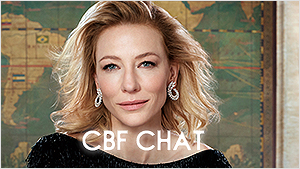
 A Manual for Cleaning Women (202?)
A Manual for Cleaning Women (202?)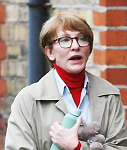 Father Mother Brother Sister (2025)
Father Mother Brother Sister (2025)  Black Bag (2025)
Black Bag (2025)  The Seagull (2025)
The Seagull (2025)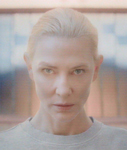 Bozo Over Roses (2025)
Bozo Over Roses (2025)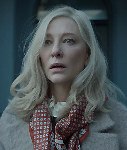 Disclaimer (2024)
Disclaimer (2024) 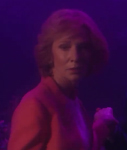 Rumours (2024)
Rumours (2024) 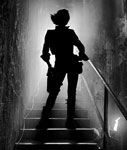 Borderlands (2024)
Borderlands (2024) 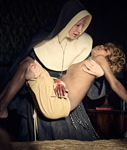 The New Boy (2023)
The New Boy (2023) 











